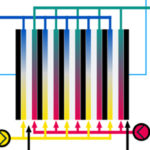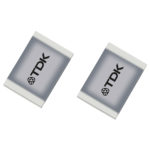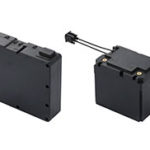In this second part of EEWorld’s “virtual roundtable” discussion on flow batteries, our panelists delve into the impact that the emergence of flow batteries is having on energy storage compared with conventional rechargeable batteries: What factors determine when flow batteries are more cost-effective than rechargeable batteries? How do the maintenance and monitoring needs of flow […]
Battery
Flow battery capabilities and performance – Virtual Roundtable (part 1 of 2)
In this first part of EEWorld’s “virtual roundtable” discussion on flow batteries, our panelists delve into the impact that the emergence of flow batteries is having on energy storage compared with conventional rechargeable batteries: What performance advantage do flow batteries have? What is the barrier to large scale deployment? And how do the environmental or […]
Flow batteries – What’s ahead?
Flow batteries have emerged as a commercial alternative that makes economic sense for certain application profiles. Additional development is still needed for flow batteries to be a mainstream energy storage technology. There are probably hundreds of research efforts worldwide. The following is a sampling of key areas of focus for flow battery research and development. […]
Flow batteries – What can you use them for?
Flow batteries are suited for use in several application areas, including utility-scale energy storage, microgrids, renewables integration, backup power, and remote and off-grid power. Flow batteries are highly scalable, and their power and energy ratings can also be scaled independently. They have very little or no self-discharge current. Flow batteries have demonstrated cycle lives of […]
How do flow batteries work?
The heart of a flow battery is a specially designed regenerative fuel cell module. A conventional regenerative fuel cell operates on the basis of a reversible electrolysis electrochemical process and can be either an open system (where water can be added, and hydrogen and oxygen removed) or a closed system. These electrolysis-based regenerative fuel cells […]
Rechargeable 100-µAh batteries come in pint-sized SMD format
TDK Corporation presents a new packing unit for CeraCharge, the world’s first SMD technology solid-state rechargeable battery, in the compact size EIA 1812 (4.4 x 3.0 x 1.1 mm3). The packing unit (B73180A0101M199) includes 10 blister-packed CeraCharge batteries which come in a vacuum-sealed plastic bag. The components are manufactured in regular series production and are […]
Li-ion 24-V battery modules optimized for industrial uses
Murata Manufacturing has developed a FORTELION 24V battery module (all-in-one type) that is ideal for industrial equipment requiring high output such as automated guided vehicles (AGVs) and robots. Mass production starts in April 2020. This module is equipped with “FORTELION”, Murata’s proprietary lithium-ion secondary battery, which uses olivine-type lithium iron phosphate as the cathode material […]
Battery charger delivers termination current of 20 mA
Texas Instruments introduced a new switching battery charger integrated circuit (IC) that supports a termination current of 20 mA. Compared to competing devices, which typically support a termination current higher than 60 mA, TI’s BQ25619 enables 7% higher battery capacity and longer run time. The BQ25619 charger also delivers three-in-one boost converter integration and ultra-fast […]
Power Electronics Top Talks in April 2019 on EDABoard.com
Peer-to-peer, engineer-to-engineer questions and answers from the EDABoard.com engineering community around power electronics. Click the “Read more” link and follow the entire conversation and maybe add your two cents by logging in to EDAboard.com AC motor speed control – In my project I have to control the speed of AC230V,50HZ, 4A, single phase motor. I […]
Sager Electronics to stock RRC2130 FlatPAQ Lithium-Ion smart battery pack from RRC
Sager Electronics is now stocking RRC’s FlatPAQ lithium-ion smart battery pack. The new RRC2130 battery with just 8mm in thickness is extremely thin. It is designed to fit into very slim devices, such as the back of a PC display or on a PC board, to allow developers to make a tablet-like design possible for […]











